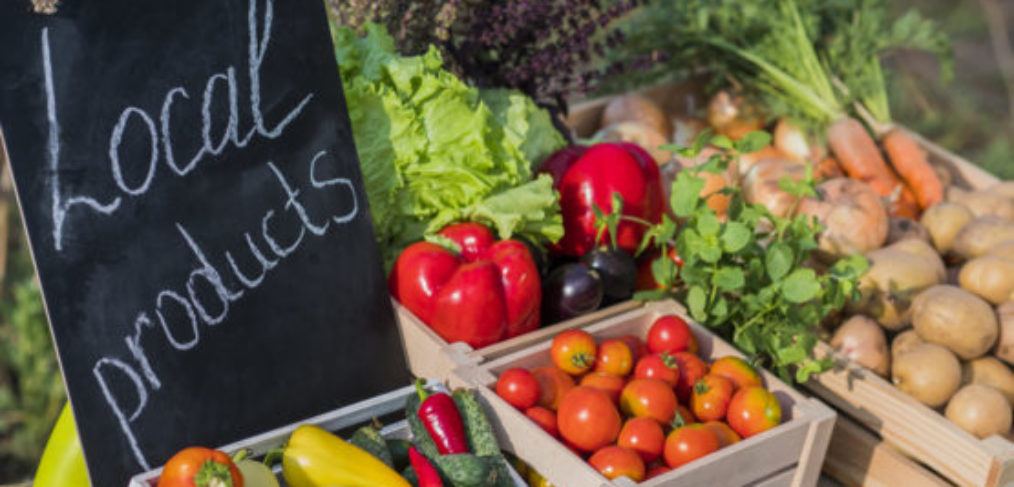Farmer’s Market Food: Better for You, Better for the Planet

How often do you visit your local farmer’s market?
Is it where you go on a regular basis to find fresh, local produce, sustainable meats and fish and craft food such as handmade pickles and nut butters?
Or more of a pastime you’ll engage in as a once in a while type of activity?
Approximately 1 in 5 Americans do their regular procurement of weekly provisions at their local markets and as of 2019, there were over 8,000 markets nationwide and growing (1).
On a personal note, up until I actually became a part of the farmer’s market community, selling my broths, salads and pates, I viewed it as a fun activity, but admittedly, would sometimes make excuses not to go:
I liked being able to shop on the way home from client work sessions, which would typically be late afternoon during the weekdays. While there certainly are farmer’s markets at all times of day and every weekday, I leaned into the convenience factor far more than I probably should have.
Sometimes I would feel overwhelmed; it was easy to find out where the grass fed and finished meat vendor was, or the fish monger who sold the very fish he’d caught that morning… but how was I to choose between the many kale, broccoli and berry vendors?
And how could I decipher which were the most sustainable amongst vendors who did not necessarily have the most trendy wording on their signs, and how important was it for a farm to have the organic seal of approval (or not!?)
One more thing that those who may be new to farmer’s market shopping and / or cooking: the feeling of not knowing how to prepare the foods purchased, leaving them to go bad in the fridge or pantry and then tossing them; the epitome of wasted food and money.
Finally, and perhaps one touch point that may resonate with many, what about cost? Some things appeared to be more expensive than what I was able to find inside on the store’s shelves.
I bring this up because it’s important to share my own learning curve in this journey.
Sometimes, it’s not until you’re truly in the middle of something can you see past what you may have believed or done in previous times.
Let’s break it down:
- Convenience. It’s fair to say that most people likely feel they have anything but enough time on their hands. So it makes sense that the ease of being able to pop into your local grocery store anytime you like scores some points. But just like with anything else, making some priority shifts can open up time windows for anything that any of us deem as important enough.
- Overwhelm. Think back to anything you’ve ever done. When it was new, it may have felt exciting… and scary simultaneously. Same here; but the same strategy can be implemented: break it down into baby steps. Expect that it’ll take you a little time before you know exactly what and how much to buy and from whom. But it won’t be long before you’re zipping around the market on a first name basis with all your favorite vendors.
- How to. This is a fair concern. What do you do when you made the time and effort to go to the market and bring everything home, only to feel at a loss about what to do with all your bounty? Start simply, and start small. Small wins, big confidence boost. Steam your broccoli. Roast your bell peppers. Grill the flank steak. Pan sear the wild black cod. Let them cool, then place in glass containers in the fridge to create your own grab and go right in your own home. Sound too time consuming? Here’s where the big opportunity exists for a total mind shift: ask yourself how important it is to you and to your family, to eat the freshest, and therefore most nutrient dense foods on a regular basis? We live in an age of convenience, and it’s not without consequence, but herein lies our chance to make some serious change now, for our future generations and our planet.
Which leads to…
- Cost. Here’s the biggie. On the one hand, you have the comparison of shopping at the ‘club’ stores, where you buy in bulk at a deep discount, a scenario which may make it seem that farmer’s market foods are ‘expensive. Consider the length of time any particular food may have sat in a container prior to getting on shelf. How many times have you bought that tub of organic lettuce only to find it was slimy when you got home? Consider how far the food traveled. I recall seeing blueberries on shelf at a local grocery store when we lived in Seattle…. in December. They were from Chile. Finally consider how and where the foods was raised or produced: fairly and with consciousness? Or anything but?
We hear a lot about organic. And “free range”. And for many, that’s where it stops.
The intentionally confusing food labeling works: it keeps us from having true knowledge and understanding in any sort of depth as to what’s really going on:
Our food system is an industry, a highly lucrative one at that, and the health of each of us is not at the top of the list of best interest.
All one needs to do is to scan through a label of many a product on shelf to see for themselves: word after unintelligible word that we cannot identify as a food.
We may then find ourselves going into that endless google rat-hole, searching for clues, then finally stepping away after feeling even more confused than ever.
But here’s the good news: by making simple shifts back to common sense eating, we can begin to find our groove.
What exactly is common sense eating?
It’s relying on food that grows locally and seasonally. Incorporating a lot of plants, enough natural fat and some properly sourced proteins.
All of which can be found at farmer’s markets.
Now of course, farmer’s market availability varies tremendously from one state to another as well as city to city.
We’re blessed in California with over 800 and not a day goes by that I do not truly appreciate this.
However, even in states that have markets which are fewer and farther between, there are ways to get access; including through CSA’s (communities of individuals who pledge support to a farm operation so that the farmland becomes, either legally or spiritually, the community’s farm, with the growers and consumers providing mutual support and sharing the risks and benefits of food production) (2).
It’s not just about dollars spent at the time of purchase.
The cost will continue to be so much higher if we opt to lean towards convenience and short term cost.
I’ll never forget something I saw at one of my first farmer’s markets as a vendor, probably four or five months into my broth making and selling journey, when I was about three months pregnant.
I’d set up my booth and was doing some food shopping before the market opened, at about 7:30 am.
I saw beneath one of the produce stand’s tables what appeared to be two small feet.
I stopped to speak with the man at the table and he laughed that since he and his family (children included) get up on the weekends at 2am to load their truck with produce from their farm to drive three hours to market, that they often fell asleep on the way.
It was simply a fact to him.
Not a complaint, nothing other than a part of what he needed to do to support his fruit business.
It was then that I knew I needed to not only continue being a part of the market as a vendor, as well as a shopper who buys every bit of food there, but to be an educator and advocate for how tremendously important it truly is to shop locally and sustainably.
This isn’t just a trendy thing to say or write.
It’s real.
And it is ALL of our job to do so.
- https://www.usda.gov/media/blog/2021/07/29/usda-celebrates-national-farmers-market-week#:~:text=The%202019%20National%20Farmers%20Market,farmers%20markets%20across%20the%20country.
- https://www.nal.usda.gov/legacy/afsic/community-supported-agriculture





